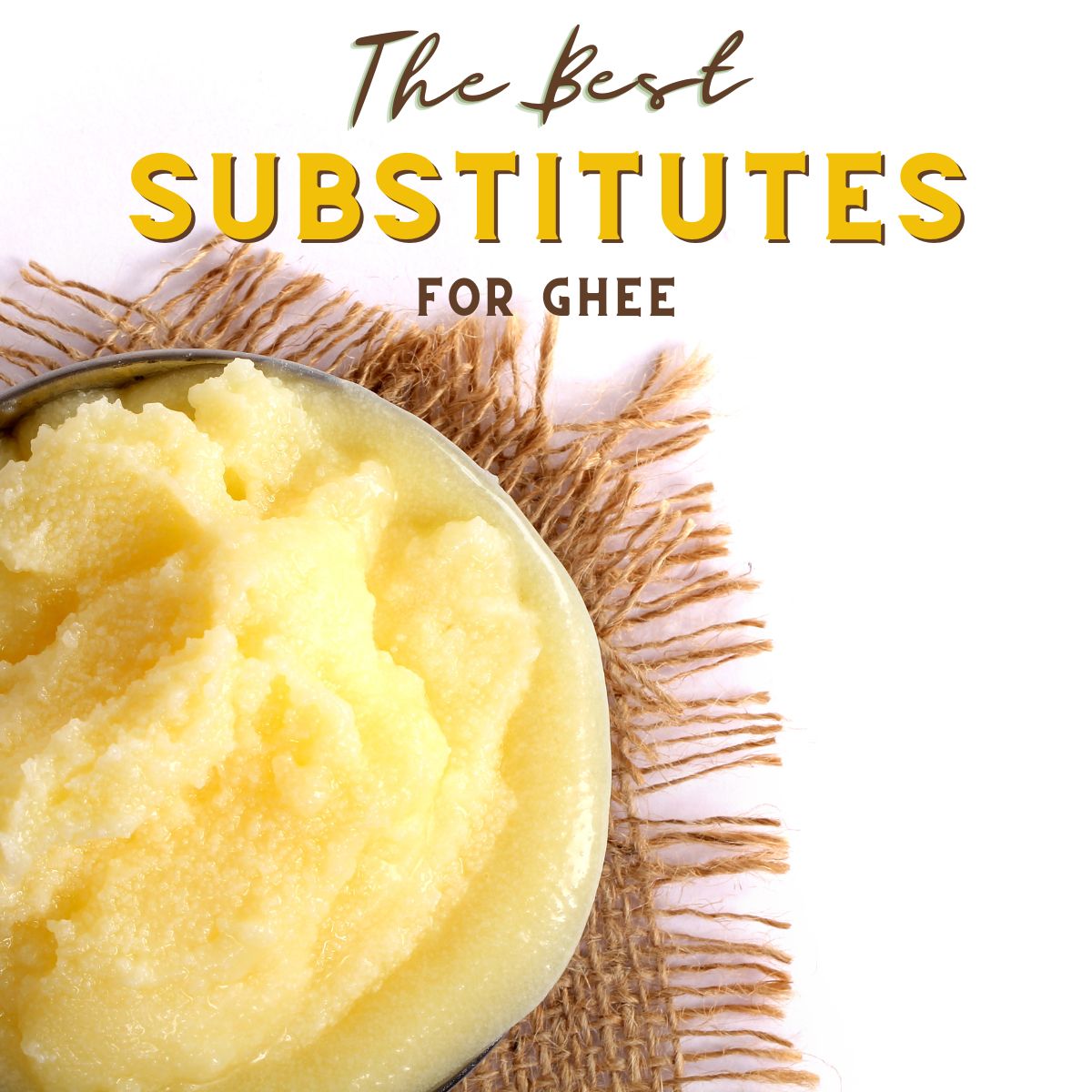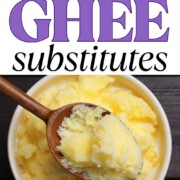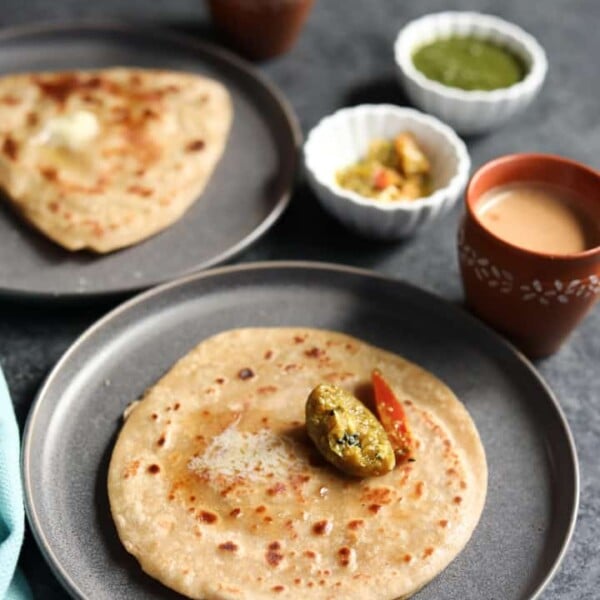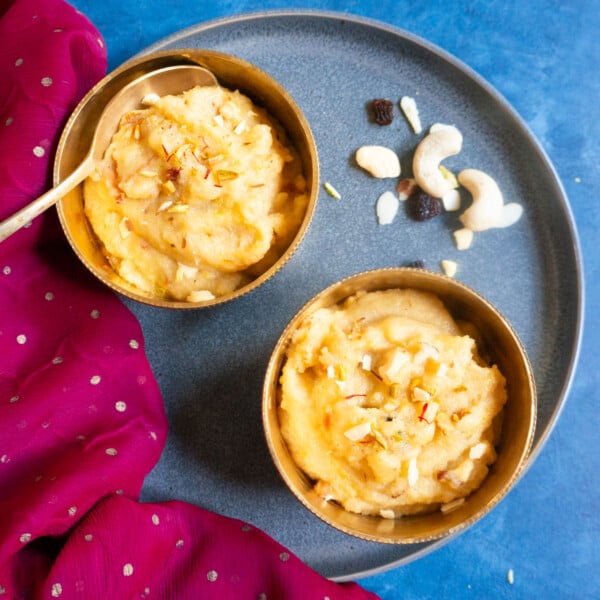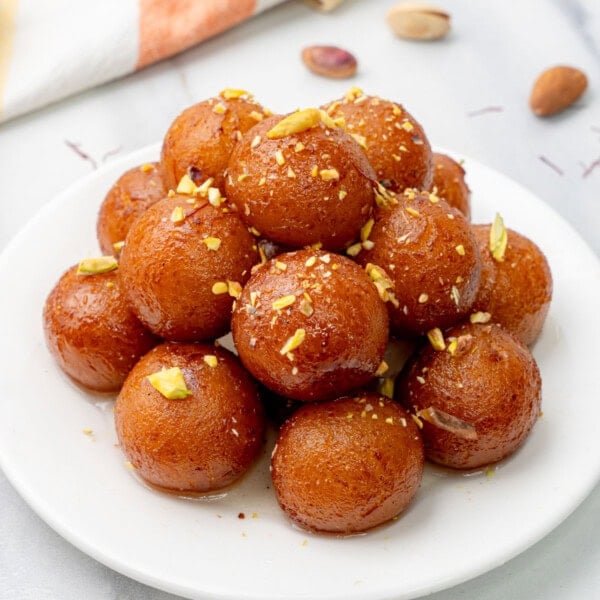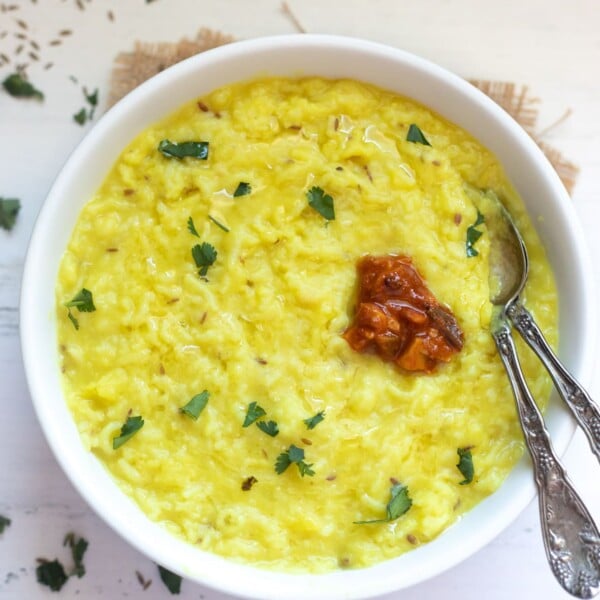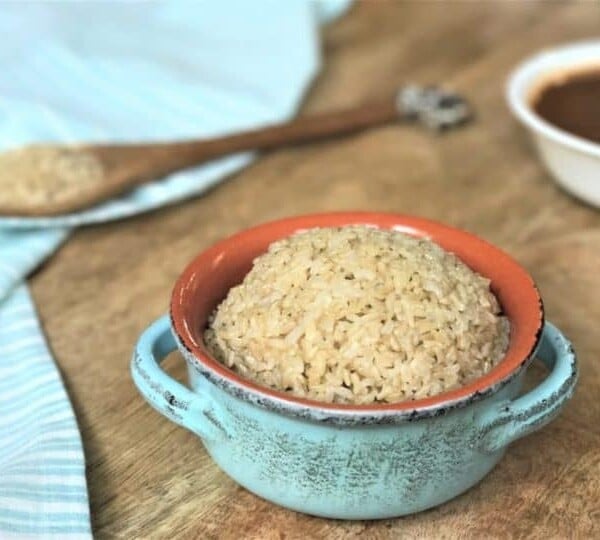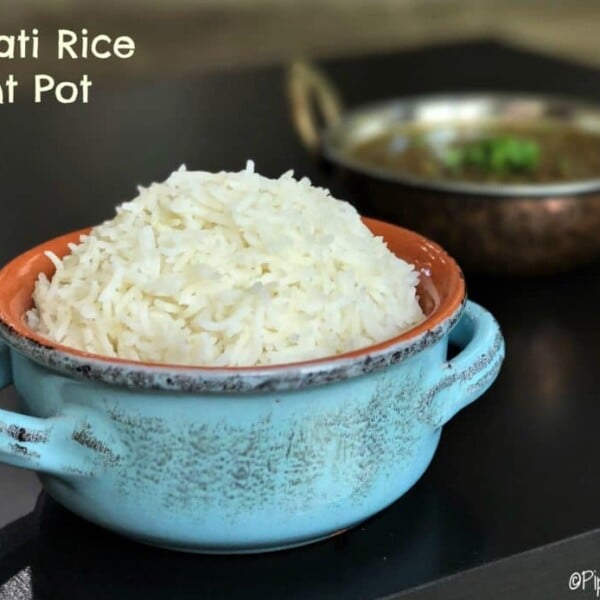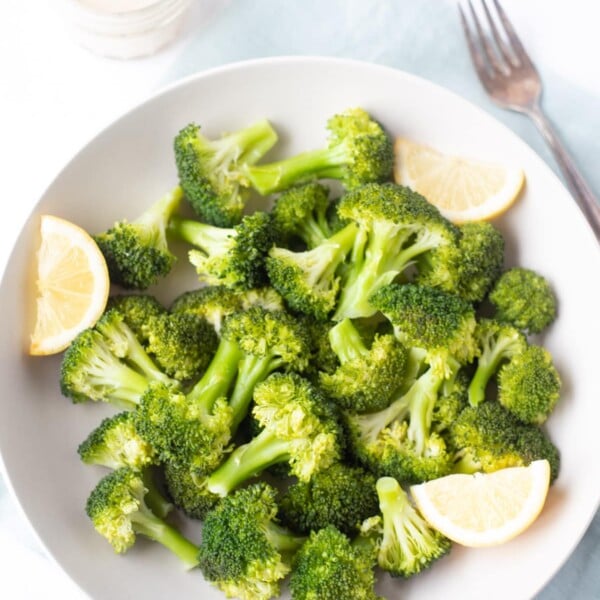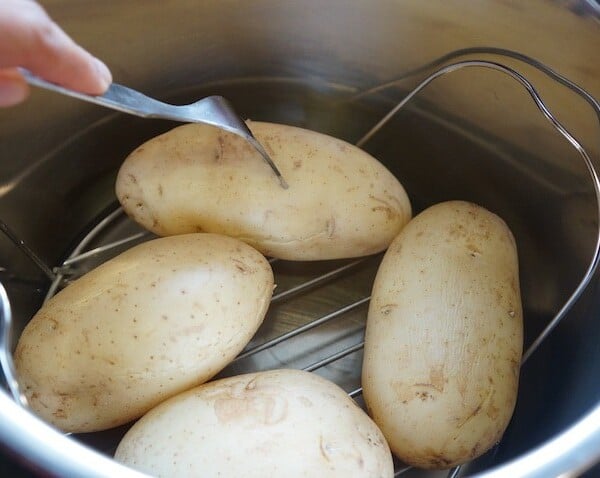With its rich, nutty flavor and high smoking point, Ghee is a beloved ingredient in many dishes. However, for those seeking alternatives due to dietary preferences, allergies, or availability, there are various substitutes that can replicate its unique characteristics. Here, we will delve into popular ghee substitutes, their flavor profiles, and their best scenarios.
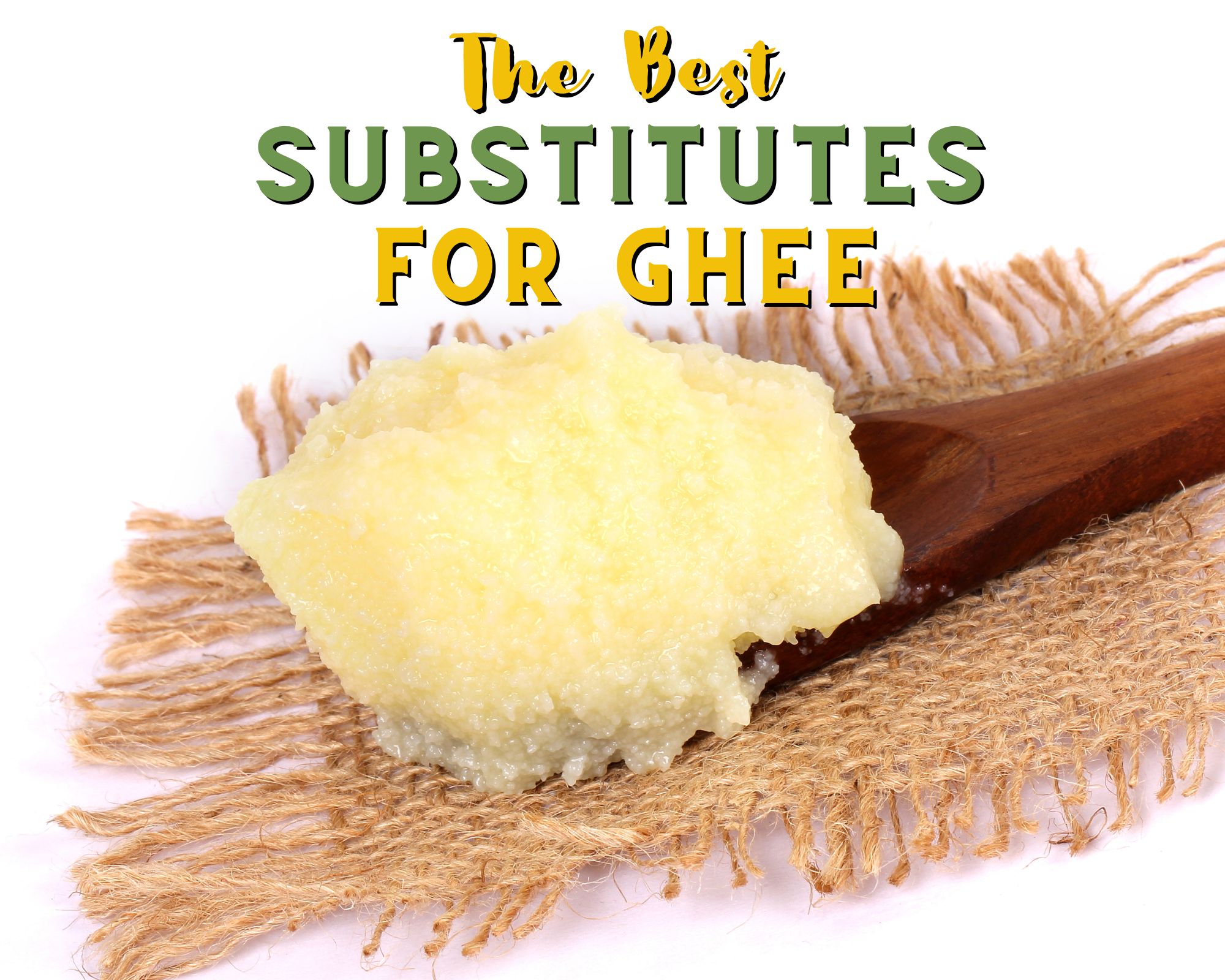
Ghee is a type of clarified butter that is commonly used in South Asian and Middle Eastern cuisines. It is made by simmering butter, which causes the water content to evaporate and the milk solids to separate from the fat. The resulting golden liquid is then strained to remove the milk solids, leaving pure, clear fat behind.
Table of Contents
What is Ghee?
Ghee, a cherished ingredient in Indian cuisine, is essentially super-clarified butter made using a particular Indian method. In Hindi, the word “ghee” simply means “fat.”
In Ayurvedic medicine, an ancient holistic healing system from India, ghee is highly revered. It is believed to have numerous benefits, including improving digestion, strengthening the immune system, and promoting overall well-being. It is also used in Ayurvedic therapies and massages.
Ghee is not considered vegan. Ghee is a dairy product that is derived from butter. While the process removes most of the lactose and casein found in butter, it is still an animal-derived product.
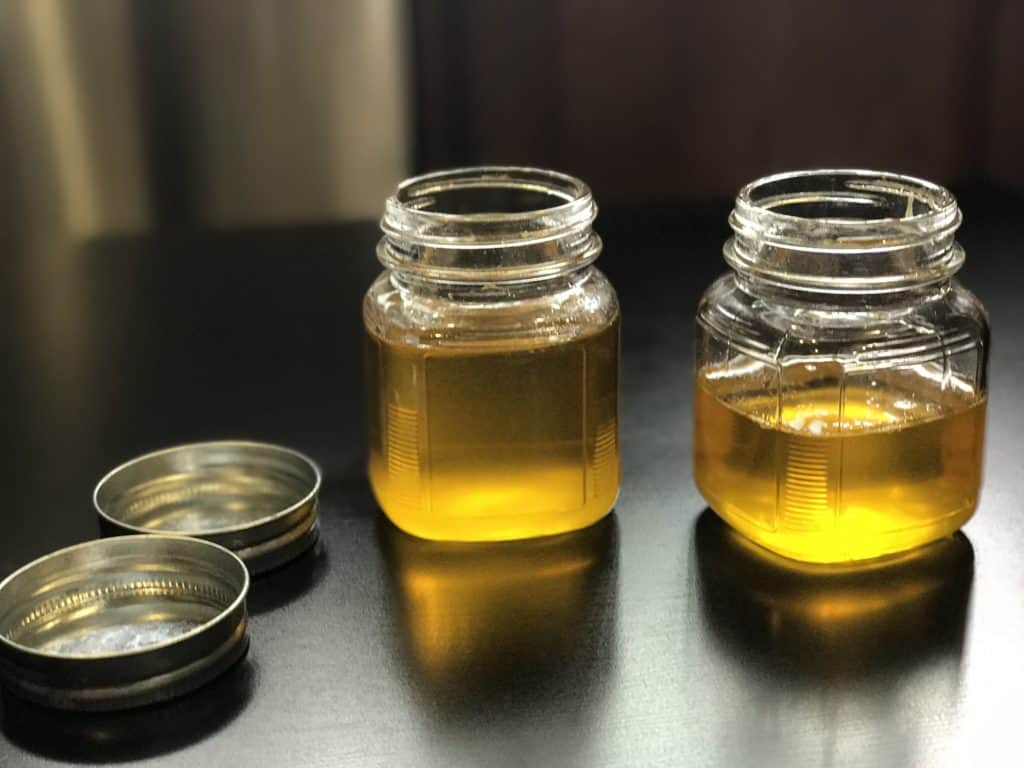
How’s it Made?
Ghee-making starts like the French method, where milk solids and butterfat are separated, and the water is cooked off. But in the Indian technique, an extra step is added. The milk solids are gently simmered until they turn slightly caramelized before straining. This gives ghee a delightful nutty flavor and a deeper color than butter.
Uses for Ghee
Ghee, with its rich, nutty flavor and high smoke point, is a versatile ingredient used in a wide range of culinary applications. Here are some popular uses for ghee:
Cooking and Frying: Ghee’s high smoke point makes it ideal for high-heat cooking methods like sautéing, stir-frying, and deep-frying. It imparts a rich, buttery flavor to dishes.
Baking: Ghee can be used as a butter substitute in baking. It adds a delightful depth of flavor to baked goods like cookies, cakes, and pastries.
Roasting Vegetables: Tossing vegetables in ghee before roasting can enhance their flavor and provide a crispy, golden exterior.
Grilling: Brushing meats, seafood, or vegetables with ghee before grilling adds a rich, smoky flavor and helps prevent sticking to the grill.
Ghee vs Butter
In the world of dairy-derived delights, ghee, and butter often find themselves at the center of a delicious debate. While they share a common origin in butterfat, these two companions have distinct characteristics that set them apart.
| Properties | Ghee | Butter |
| Production Process | Ghee, with its roots in India, undergoes a more intense process. Butter is gently simmered, causing the water content to evaporate and the milk solids to separate. This yields a clear, golden liquid known as ghee. | Butter is created through the churning of cream, separating the butterfat from the liquid (buttermilk). The fats are then gathered and molded into the butter we know. |
| Flavor and Texture | Ghee’s flavor is distinctively nutty and rich, thanks to the caramelization of milk solids during production. It’s revered for its ability to enhance the taste of a wide array of dishes. | Butter boasts a creamy, rich flavor. Its smooth, spreadable texture is perfect for everything from spreading on toast to baking pastries. |
| Nutrition Content | Ghee has slightly more calories and total fat compared to butter. Ghee contains significantly more Vitamin K compared to butter. | Both ghee and butter are good sources of Vitamin A and Vitamin E. They contribute to overall antioxidant activity in the body. Ghee and butter have similar cholesterol content. |
Best Substitutes for Ghee
1. Clarified Butter
The process of clarifying butter involves melting it and then skimming off the milk solids that rise to the surface. This leaves behind a clear, golden liquid. Clarified butter has a clean, buttery flavor without the nuttiness that develops in ghee.
It is suitable for a wide range of cooking methods, including sautéing, frying, and baking. The smoking point of clarified butter is typically around 450°F (232°C).
2. Coconut Oil
Coconut oil can be used as a substitute for ghee in many recipes. It provides a similar richness and can be a suitable option, especially for those who follow a vegan or dairy-free diet.
Like ghee, coconut oil has a high smoke point, making it suitable for high-heat cooking methods such as frying and sautéing. It usually ranges from 400°F to 450°F (204°C to 232°C).
If you’re using coconut oil as a substitute for ghee, be mindful of the coconut flavor it imparts. You may need to adjust seasoning and flavorings accordingly.
3. Avocado Oil
This is a dairy-free or vegan alternative. Avocado oil is known for its nutritional benefits and versatility in cooking. Avocado oil has a very mild and neutral flavor, which means it won’t impart a distinct taste to your dishes.
The smoking point of avocado oil is one of the highest among commonly used cooking oils. It typically ranges from 375°F to 520°F (190°C to 270°C).
4. Sesame Oil
Sesame oil can substitute ghee in certain recipes, particularly in Asian cuisine, where its nutty flavor is complementary. Sesame oil is a liquid at room temperature so that it won’t provide the same creamy texture as solid ghee. It’s best used for dishes where the distinct flavor of sesame is desired.
There are two types of sesame oil: regular and toasted.
Regular sesame oil has a higher smoking point and is suitable for sautéing and stir-frying. Smoking point: 410°F to 450°F (210°C to 232°C).
Toasted sesame oil has a lower smoke point and is typically used as a finishing oil for flavor. Smoking point: Around 350°F (177°C).
5. Olive Oil
Olive oil has a distinctive fruity and slightly peppery flavor, which can add a unique dimension to your dishes. This flavor may not be suitable for all recipes that call for ghee.
Olive oil is a liquid at room temperature, so it won’t provide the same creamy texture as solid ghee. It has a lower smoke point, typically ranging from 325°F to 375°F (163°C to 190°C).
While olive oil can be a flavorful and lighter substitute for ghee in many recipes, it’s important to be mindful of its distinct taste and aroma. It’s best used for dishes where the olive oil flavor complements the other ingredients.
6. Butter
Butter is a great alternative for ghee, but has a lower smoke point of about 350°F. It works well in baking recipes. For most other recipes, you can use butter if you are not heating to a very high temperature, or you can use equal parts of butter and oil in place of ghee in a recipe.
Homemade Ghee Recipe (Instant Pot)
Homemade ghee is a wonderfully aromatic and flavorful form of clarified butter that is commonly used in Indian cuisine as well as in various other culinary traditions. Here’s a simple recipe for making ghee at home:
Instructions:
Start the Instant Pot: Set your Instant Pot to Saute mode (Normal).
Add Butter: Place the butter into the Instant Pot. Kerrygold or Costco unsalted butter are excellent choices, especially Kerrygold, which is made from grass-fed cows’ milk.
Monitor and Set a Timer: Since the Instant Pot’s timer doesn’t work in Saute mode, set an external timer for 10 minutes.
Observe the Process: The butter will start to boil and froth. As it continues to cook, the milk solids will separate, and the water will evaporate.
Cook for 10 Minutes: Let it cook for about 10 minutes until the milk solids settle at the bottom.
Turn Off the Instant Pot: Once the 10 minutes are up, turn off the Instant Pot.
Continue Cooking: Even though the Instant Pot is off, the ghee will keep cooking, and the milk solids will caramelize, giving the ghee a beautiful golden color.
Strain the Ghee: Remove the steel insert from the Instant Pot. Use a cheesecloth or fine mesh strainer to separate the caramelized milk solids from the ghee.
Store in a Jar: Transfer the strained ghee to a heat-proof glass or steel jar. Make sure the ghee is completely cooled before sealing the jar.
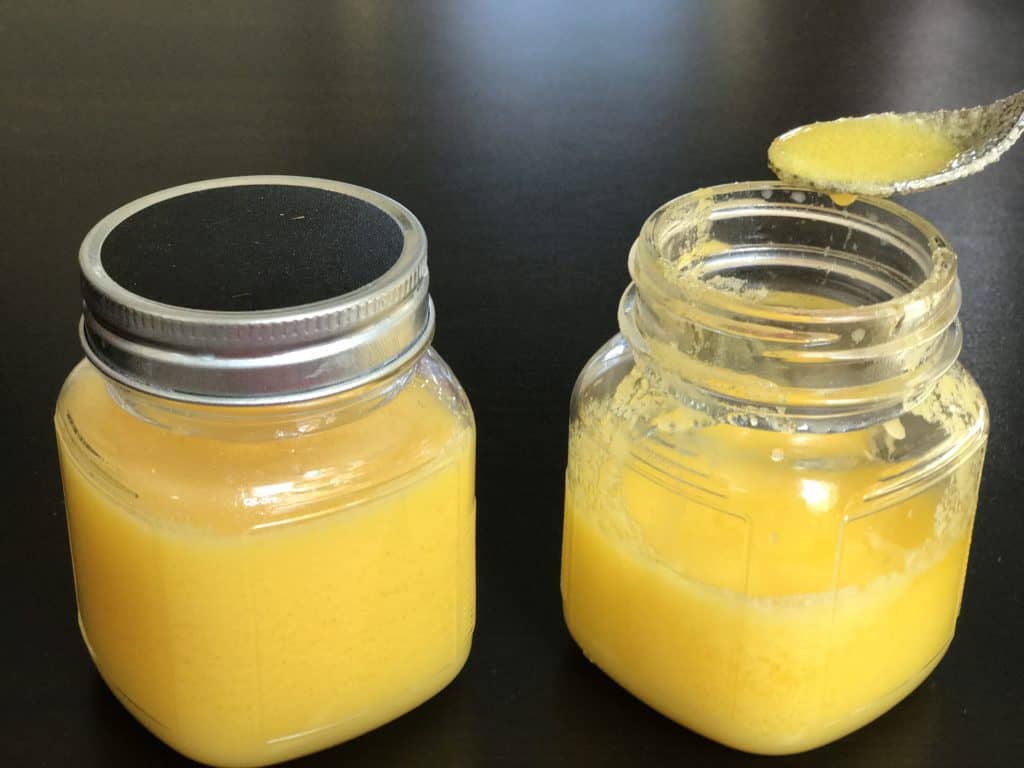
Enjoy! Ghee can be stored at room temperature and has a long shelf life.
The aroma that fills your home while making this ghee is delicious. You might just want to spread it on a paratha right away… Delicious!
Check out our full recipe here.
Homemade Ghee Recipe (Stovetop method)
Instructions:
Add Butter: Melt the butter in the pan over medium-low heat.
Set a Timer: Give it 10 minutes to cook. The mixture will begin to bubble and produce foam after about five minutes.
Observe the Process: By the end, there should be very little foam remaining because the majority of the foam will have vanished by that point.
Continue Cooking: When the milk solids that settle to the bottom of the pan turn golden, the ghee is done.
Strain the Ghee: Use a cheesecloth or fine mesh strainer to separate the caramelized milk solids from the ghee.
Store in a Jar: Transfer the strained ghee to a heat-proof glass or steel jar. Make sure the ghee is completely cooled before sealing the jar.
Enjoy! Ghee can be stored at room temperature and has a long shelf life.
Final Thoughts: Best Alternative
Finding the best alternative for ghee largely depends on the specific needs of your dish and your dietary preferences. Each substitute brings its own unique flavor profile, cooking properties, and nutritional benefits to the table.
The best ghee alternative depends on individual dietary preferences and specific recipe requirements. If ghee is not readily available, or if you’re seeking an alternative that closely mimics its properties, look no further than clarified butter. Clarified butter shares many of the same qualities that make ghee a beloved ingredient in kitchens worldwide.
Recipes Using Ghee
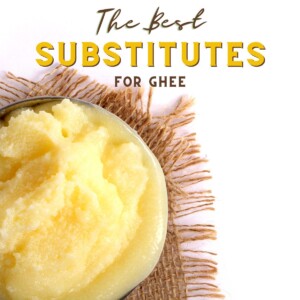
Best Substitutes for Ghee
Ingredients
- Clarified Butter
- Coconut Oil
- Avocado Oil
- Olive Oil
- Butter
Instructions
- Clarified Butter: Replace the specified amount of ghee with an equal amount of clarified butter, use 1:1 ratio.
- Coconut Oil: Minimize the coconut flavor, opt for refined coconut oil. It has a more neutral taste compared to unrefined (virgin) coconut oil. Replace the specified amount of ghee with an equal amount of coconut oil.
- Avocado Oil: It has a mild, neutral flavor that won't impart a distinct taste to your dishes. This makes it suitable for a wide range of recipes. Replace the specified amount of ghee with an equal amount of avocado oil.
- Olive Oil: It has a distinctive, fruity flavor that can complement a wide range of dishes. It has a lower smoke point, typically ranging from 325°F to 375°F (163°C to 190°C).
- Butter: If you don't have access to clarified butter, use regular butter as an alternative to ghee. Remember the smoke point is lower at about 350°F, so it will work well for baking, but not for frying dishes. You can also use a combination of equal parts of butter and oil in a recipe that calls for ghee.
